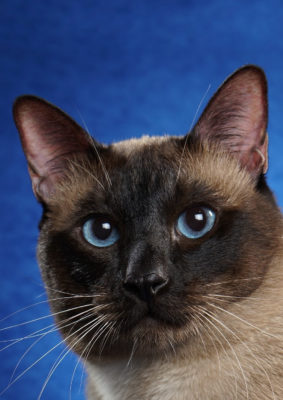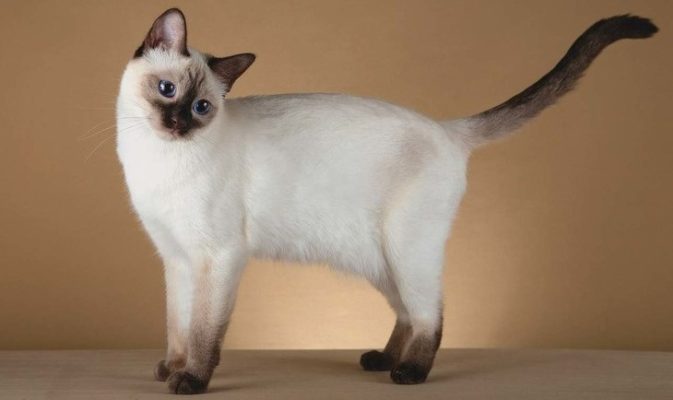Thai
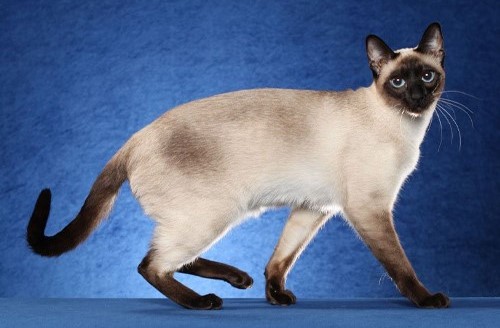
Thai cats are very quickly and firmly attached to people. They are very loving, affectionate, and devoted to their families. They like to be in the company of people, so they should not be left alone for a long time. If it so happens that the cat has to be left alone quite often, you should consider getting her a companion. Together two cats will not be lonely.
Table of Contents
Breed Information
| Origin | Thailand |
| Size | Males 26-30 cm Females 25-28 cm |
| Weight | Males 5-8 kg Females 4-7 kg |
| Fur Type | Short-haired |
| Color | Colorpoint |
| Lifestyle | Indoors |
| Lifespan | 12-16 years |
| FIFe Classification | – |
| WCF Classification | Group 4: “Siamese Oriental Shorthair” Breed designation – THA |
| TICA Classification | TH |
| Group | Short-haired cats, apartment cats (docile cats) |
| Price | $100-400 |
Breed Photos
Origin History
The history of the Thai cat breed originated in Thailand. This breed is also often called traditional or old-fashioned Siamese. In 1886, Thai cats were brought to England as a gift to the royal family. Therefore, they were also called royal cats from Siam. Western breeders renamed the breed Siamese and began to improve its appearance through selective breeding. Thus appeared a cat with a slender body, a longer head, and brighter sapphire blue eyes. Today this breed is called Siamese.
Fortunately, some breeders liked Siamese cats’ original appearance and continued breeding them in their former form. By the 1980s, the old-style Siamese breeds were no longer competitive in the show ring, but in 1990, Anneliese Hackmann introduced the classic Siamese cat named Tai to the showrooms of Europe. The breeder’s efforts inspired other breeders to start breeding these cats, which have begun to be called Thai cats. In 1990 the World Cat Federation officially recognized Thai cats. The International Cat Association conferred champion status on Thais in 2010.
Appearance
The Thai cat is a short-haired cat breed with a soft coat texture. These cats have a strong backbone and muscular body. They have a medium-sized wedge-shaped head, ears wide at the base, and a long flat forehead. These cats are owners of striking blue eyes that beautifully complement their pointy coat.
In general, the Thai breed can be called Siamese old-fashioned because of its great resemblance to the modern Siamese cat. The Thai cat breed is characterized by colorpoint color – paws, tail, ears, and muzzle are always colored in a dark color, while the main color of the coat is lighter. The standard allows for ten color variations:
- Blue Point: the blue color of the markings on the background of the coat of a cool shade;
- Syl Point: spots of dark brown, almost black hue on a light background;
- Cream Point: milk-colored markings on a white background;
- Red Point: iris-colored marks on snow-white background;
- Chocolate Point: chocolate spots on a darkened background;
- Tortie Point: spotted reddish-black-and-white coloration;
- Tabby Point: muzzle, paws, and tail are striped;
- Lilac Point: light gray-blue spots on the background of a milky coat;
- Caramel Point: light red spots on a white background;
- Fawn Point: light gray spots on the background with a blue tint.
Character
Thai cats are very quickly and firmly attached to people. They are very loving, affectionate, and devoted to their families. They like to be in the company of people, so they should not be left alone for a long time. If it so happens that the cat has to be left alone quite often, you should consider getting her a companion. Together two cats will not be lonely.
These cats are very smart and intelligent. Also, their distinctive feature is that they are talkative. You should be prepared because the cat will often meow and “tell” you how its day was or notify you if it is not happy about something. Thai cats are very fond of attention. They can often follow their owner around the house, observe all his actions, and sometimes get involved in his activities. They love to curl up on the lap of the owner, rub against him, and sometimes can jump on his head. The main thing for the Thai cat is to get attention. Therefore, before getting a pet of this breed, you should be sure to give it enough time.
Care
Thai cat hair is silky, soft, and short, so it does not require special care. The cat needs to be brushed regularly to remove loose hair, reduce shedding, and prevent tangles formation. It is enough to do it once a week. The ears should also be checked regularly for dirt or possible infection and cleaned if necessary. Regular clipping of the claws is also an important part of the care. Also, the cat should get a scratching post, which will help keep the claws in good condition. As with all cats, it is important to regularly take her to the vet to detect any health problems in a timely manner. The veterinarian can help develop a grooming regimen that will keep your pet healthy.
Education
Moving into a new home, Thai kittens quickly learn the rules of behavior in it. To teach a kitten to go to the litter box, eat from their bowls, not climb on the tables, and use the scratching post is not difficult. The main thing is to find the right approach to the kitten – talk to him calmly, do not shout, and, especially, do not use physical force. If the pet does not obey, you can calm it down with a cold water jet, for example, using a sprayer. The cat should be provided with a sufficient amount of physical activity. To do this, you need to play with it a lot. It is also essential to take care of the availability of toys.
Common Diseases
Thai cats are a generally healthy breed. The life expectancy of this breed of cat reaches 16 years. For the Thai cat and the Siamese cat, problems such as strabismus and deformed tail are characteristic. Fortunately, with these problems, cats can lead a normal life. Very rarely, strabismus may be accompanied by pain. In this case, the cat will need treatment.
Also, cats can be diagnosed with such a hereditary disease as gangliosidosis – a deficiency in the body of an enzyme necessary for certain lipids’ metabolism. As a consequence, excess fat accumulates inside the cells, disrupting their normal functioning. Symptoms of the disease include impaired walking coordination, enlarged liver, tremors, and visual disturbances.
Nutrition
The diet of Thai cats should be rich in meat, protein, fats, vitamins, and low carbohydrates. The cat can be fed industrial food or natural products, but you should not mix them. In the case of feeding natural food, the cat should have a separate diet. At the same time, you must remember not to feed the cat from the family table. Proper nutrition will keep the cat healthy.
The cat can be offered lean meats such as chicken, rabbit, veal, or turkey of natural products. The meat should be cut into small cubes and boiled water before serving. You can diversify the cat’s diet with boneless sea fish in raw form, as well as various porridges. Sometimes it is allowed to treat the pet with dairy products, eggs, raw vegetables, and fruits.
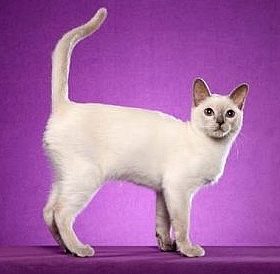 Tonkinese
Tonkinese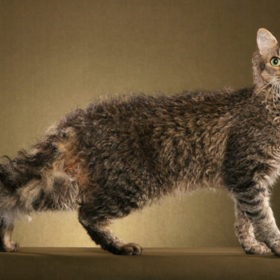 LaPerm Shorthair
LaPerm Shorthair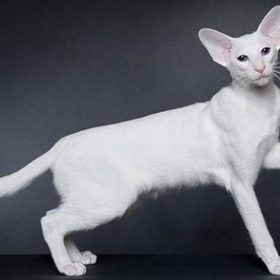 Foreign White
Foreign White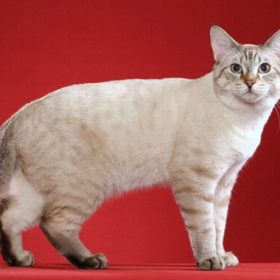 American Bobtail Shorthair
American Bobtail Shorthair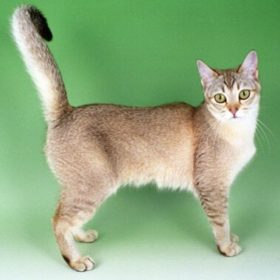 Burmilla Shorthair
Burmilla Shorthair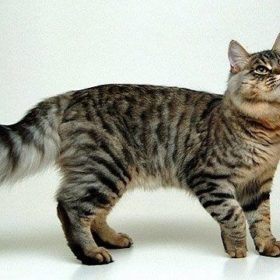 Domestic Cat
Domestic Cat